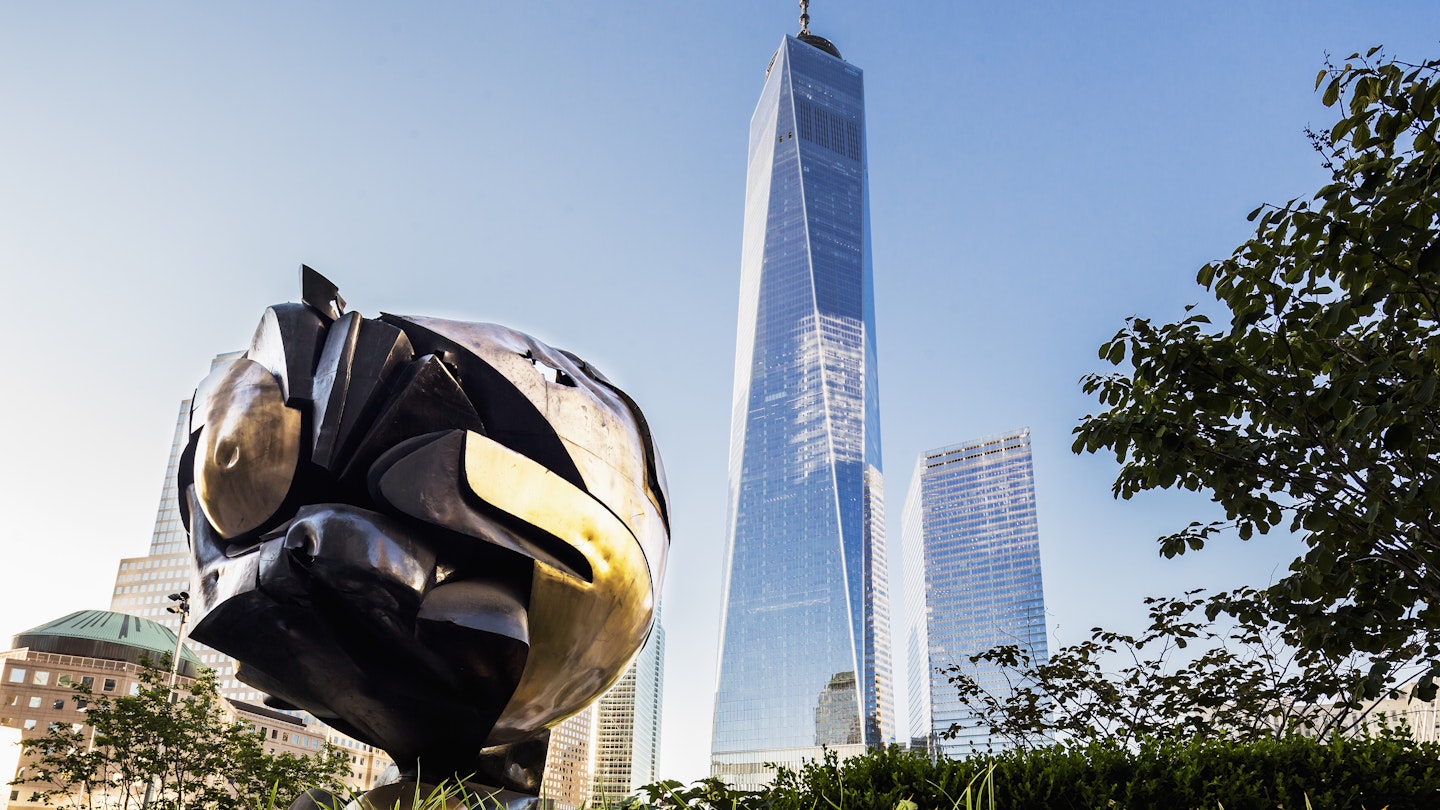I was a newly licensed New York City tour guide in 1995 when my relationship with The Sphere began.
I had been stationed at the World Trade Center complex, meeting tourists from around the world, who were there to visit the 110-floor Twin Towers. At the base of the towers was an expansive plaza, which was surrounded by five additional impressive buildings that stood on the periphery of the 16-acre complex. In a space between the towers, atop a dark, granite fountain, sat The Sphere.
The Sphere at the Center of It All
One of the largest bronze sculptures in the world, The Sphere commanded attention. It stood 25 feet high, 17 feet wide, and, with the fountain, weighed more than 20 tons. The Sphere was mounted on a circular disc that sprayed water in a ring running around the sculpture. The fountain and The Sphere were a perfect complement to each other, together creating an impressive focal point in the Austin J. Tobin Plaza.
Created by the German sculptor Fritz Koenig, this masterpiece emerged as a significant landmark after its installation in 1971. Koenig, born in 1924 in Würzburg, Germany, became one of the most prominent German sculptors after WWII. Commissioned by the Port Authority of New York and New Jersey, The Sphere was cast in 52 bronze segments in Bremen and shipped whole to Lower Manhattan. Originally called Große Kugelkaryatid N.Y., it was affectionately known as “The Sphere” around the World Trade Center.
A Contrast to the Imposing Twin Towers
Koenig intended it as a contrast to the towering structures, symbolizing world peace through global trade. The sculpture referenced a globe with a surface that appeared to crack, revealing large black geometric forms. This striking design made The Sphere a popular backdrop for countless photographs taken by both New Yorkers and visiting tourists.
Hanging Out in the Austin J. Tobin Plaza
While the imposing towers reached for the heavens, it was The Sphere that grounded visitors back on earth. The Austin J. Tobin Plaza became a tranquil oasis within a bustling city, often hosting concerts and dance performances. Whether it served as a meeting spot or source of enjoyment, The Sphere presided over the plaza like a friendly giant.
Out of the Rubble of Ground Zero
On September 11, 2001, the world saw the attacks on the World Trade Center. Many feared The Sphere had been reduced to rubble; however, it survived the destruction. According to the 2001 documentary, Koenig’s Sphere, the artist learned from a televised report that The Sphere had not been destroyed. Remarkably, it was recovered and eventually announced it would be relocated to Battery Park.
Upon its unveiling, many were initially shocked to see the sculptural loss of its golden shine, as it had transformed into a poignant reminder of the tragic events.
The Sphere’s New Home in Liberty Park
In 2017, The Sphere found a permanent resting place at Liberty Park, overlooking the new World Trade Center site. Nestled among gardens and trees, this elevated spot allows The Sphere to oversee the ongoing construction of the St. Nicholas Greek Orthodox Church while offering panoramic views that invite visitors to reflect on the tragic past.
A Symbol of New York’s Resilience
The Sphere’s survival stands as a testament to the resilience of New York and the values that remain significant, particularly for families who lost loved ones during the attacks. Michael Burke, whose firefighter brother perished on 9/11, remarked that the sculpture’s “scars and battered shape testify to the perseverance and resiliency of New York, America, and those values.” With its new role, The Sphere connects the present to its historical context, ensuring that the memory of the past endures for future generations.
The Sphere is one of the few survivors of the devastation of 9/11. While its aesthetic beauty has changed, its symbolic significance remains powerful, bridging the past with the present.




